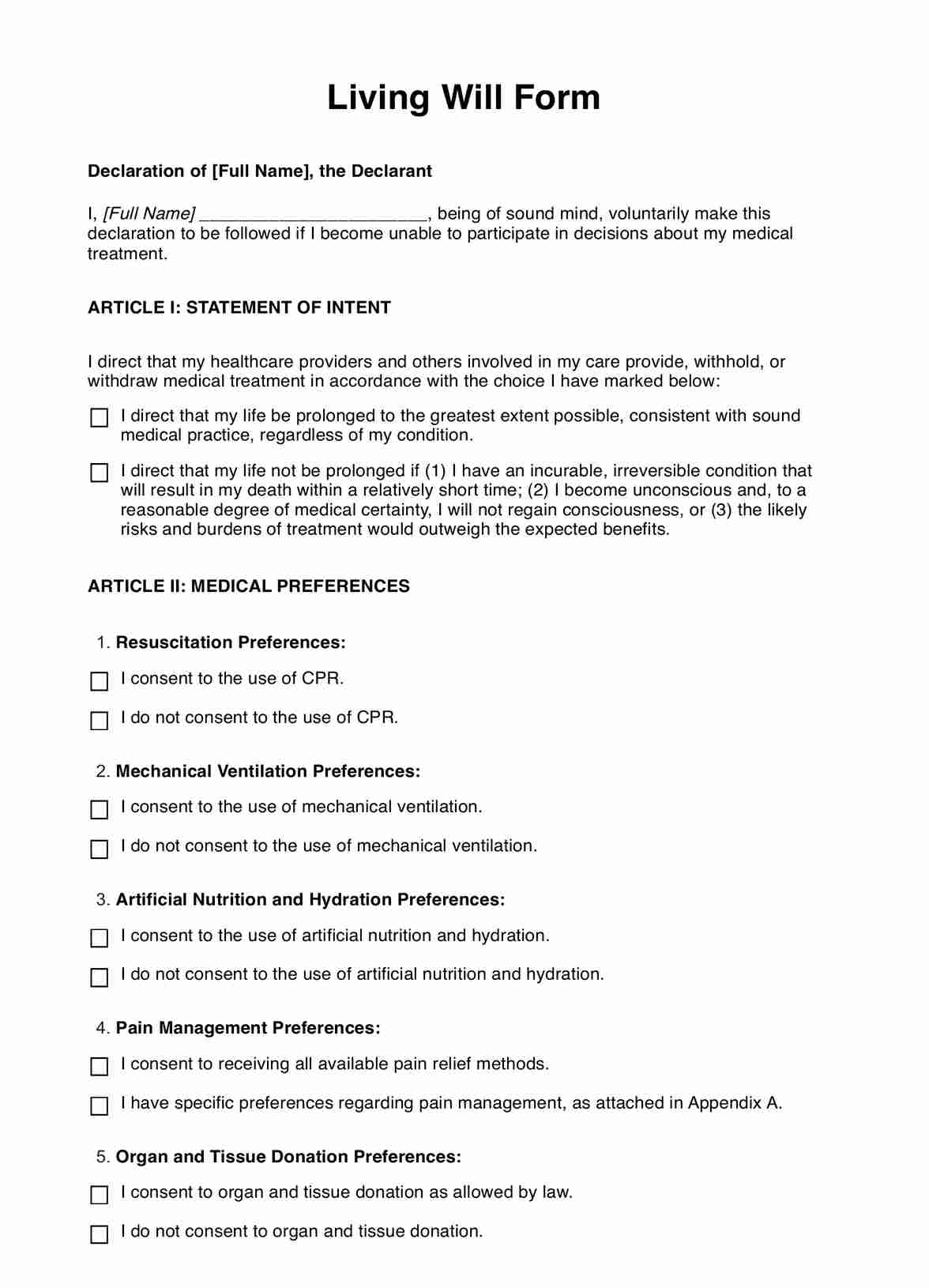Anyone who wants to ensure their healthcare preferences are known and honored should they become unable to communicate them.

Living Will Form
Discover how to navigate the complexities of a Living Will Form. Our guide offers step-by-step instructions and valuable insights.
Use Template
Living Will Form Template
Commonly asked questions
During estate planning, after a significant diagnosis, or when considering future medical care.
They are filled out with the assistance of legal and healthcare professionals, then shared with relevant parties to ensure that healthcare wishes are followed.
EHR and practice management software
Get started for free
*No credit card required
Free
$0/usd
Unlimited clients
Telehealth
1GB of storage
Client portal text
Automated billing and online payments











